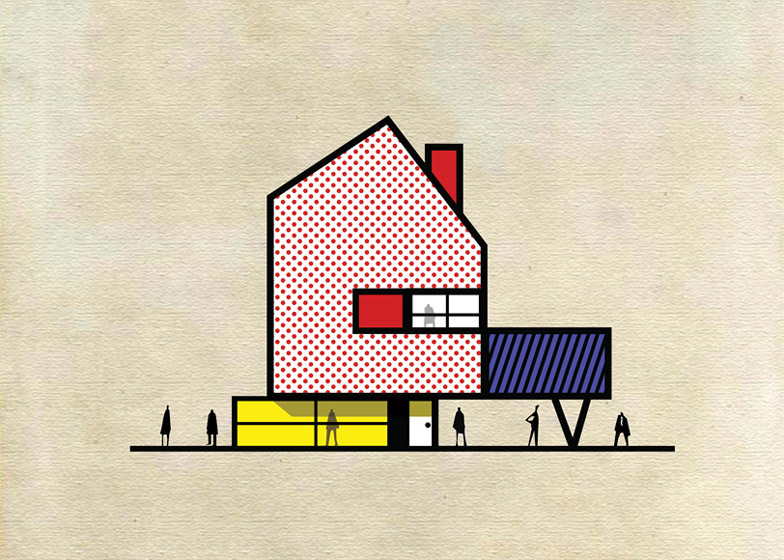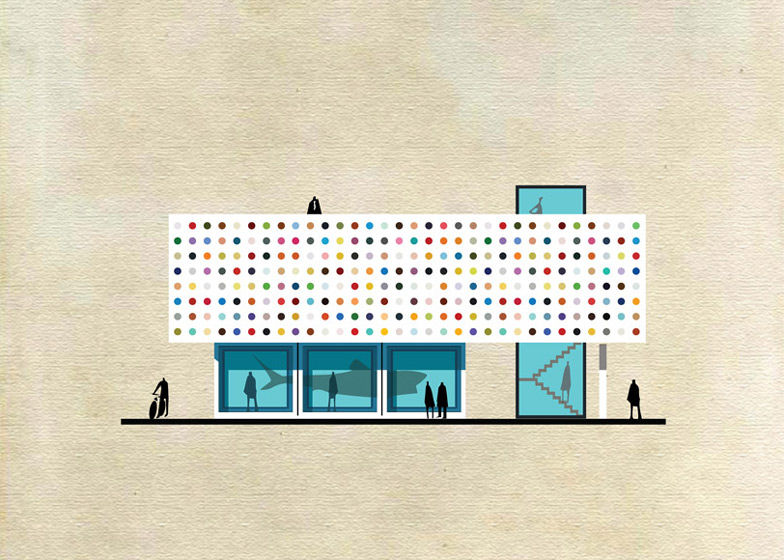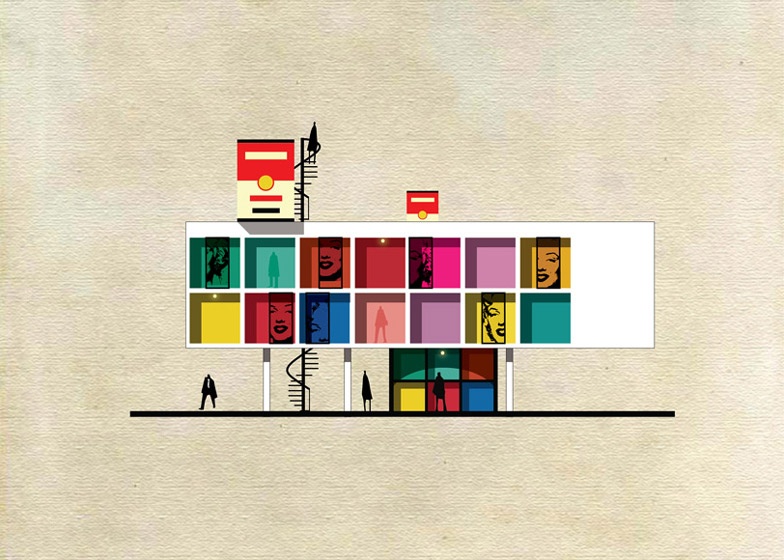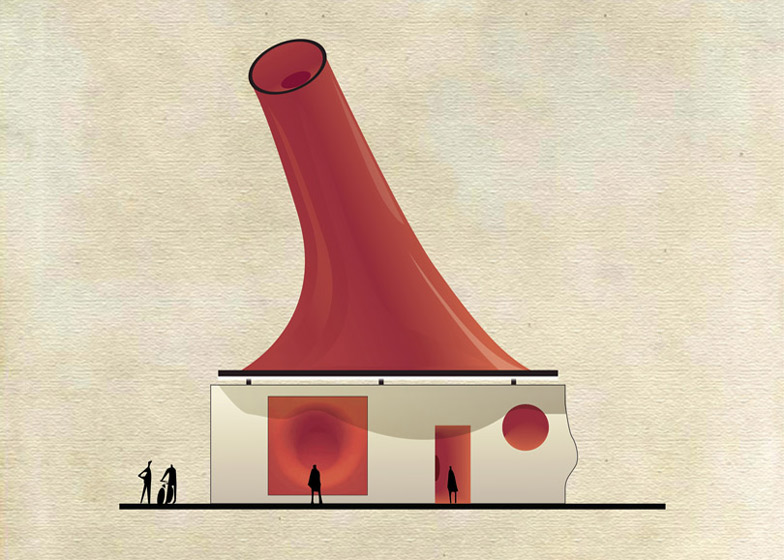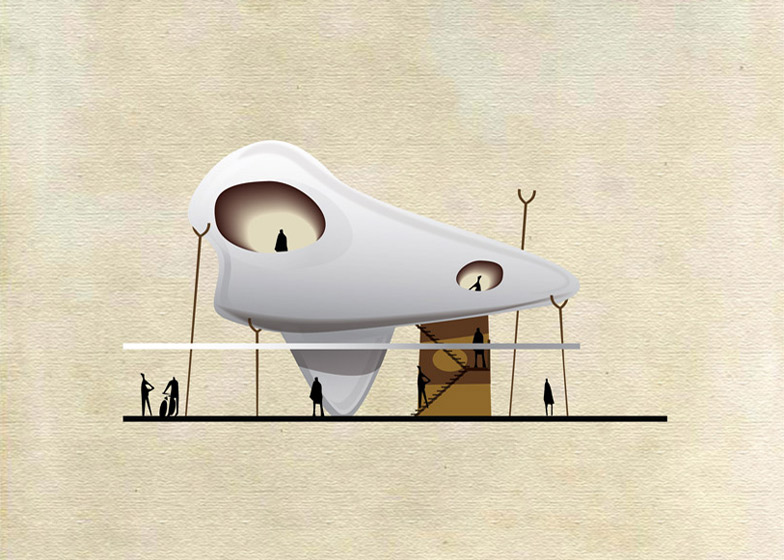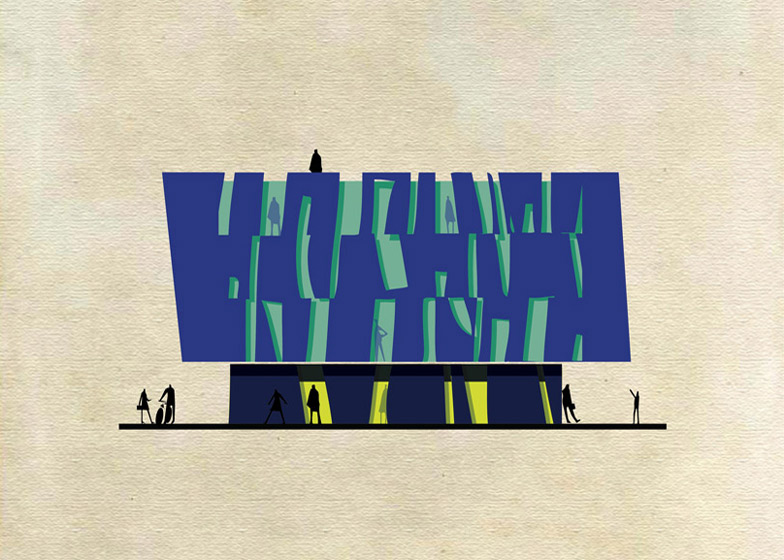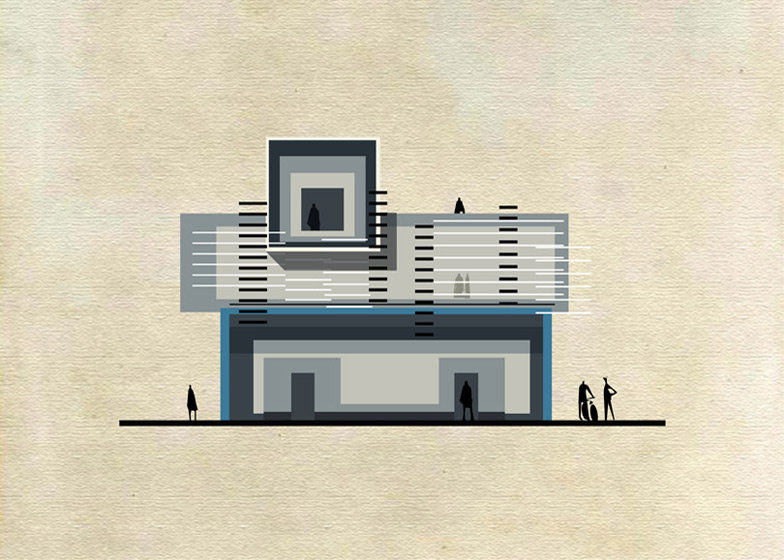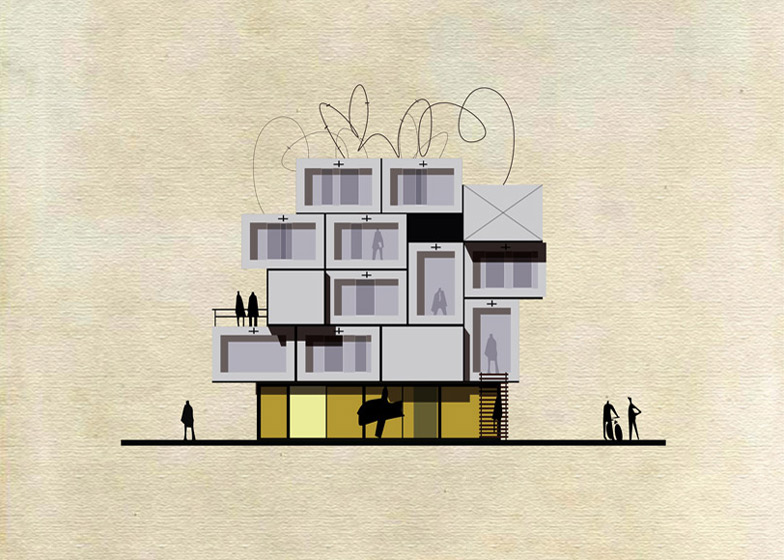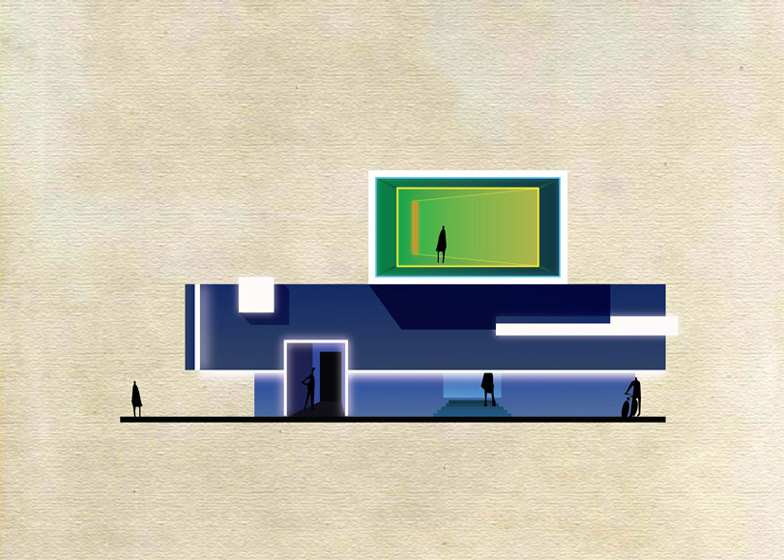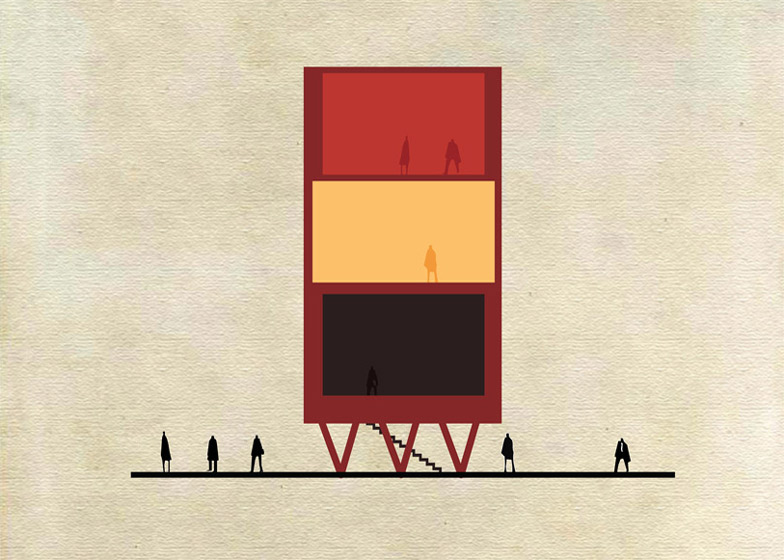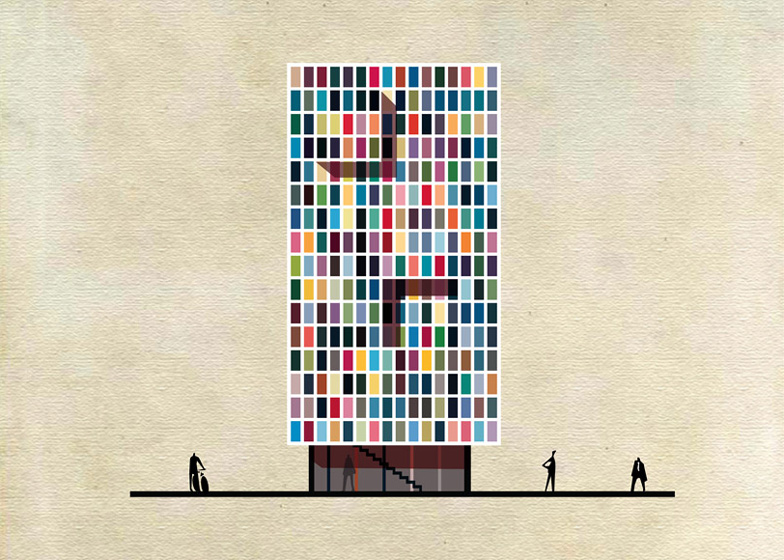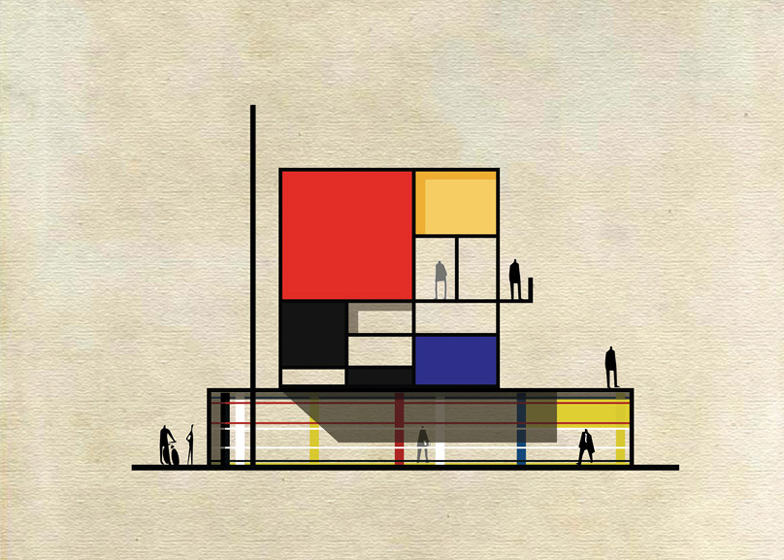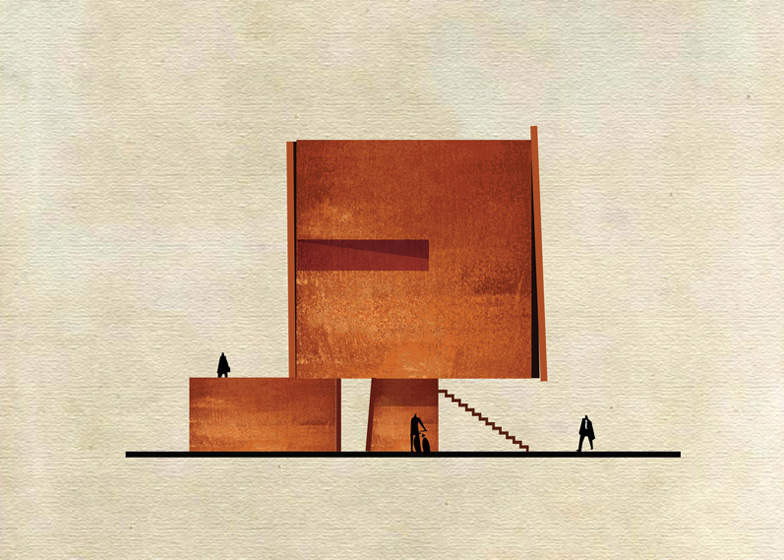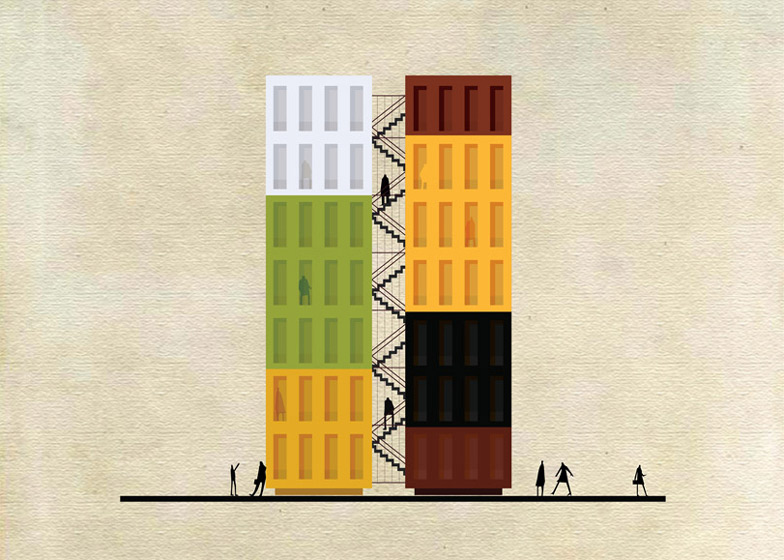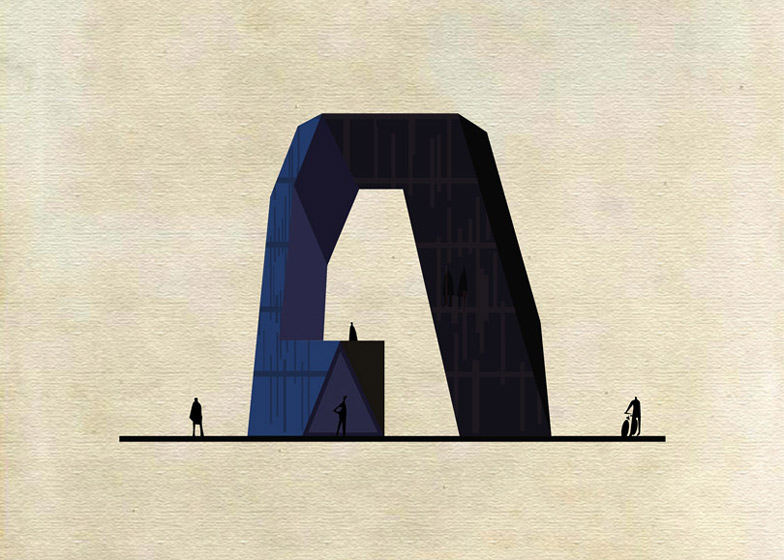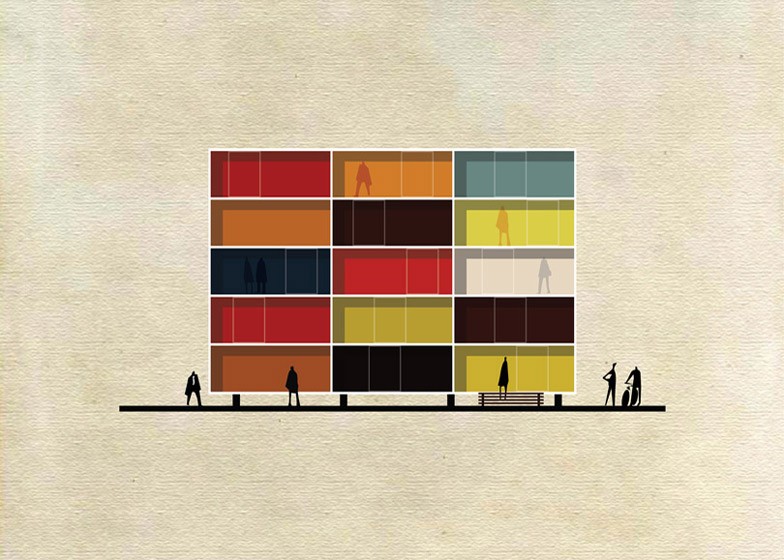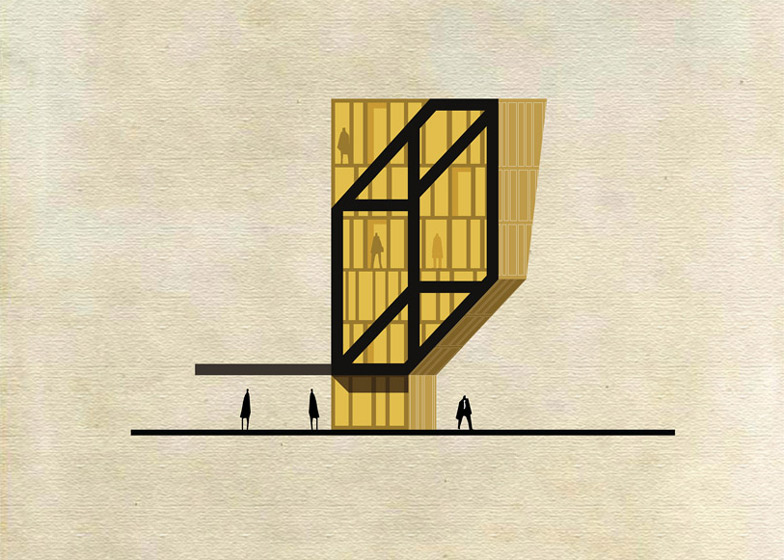Iconic works from artists including Piet Mondrian, Andy Warhol, Damien Hirst, Marcel Duchamp and more are reinterpreted as cross-sectional drawings of buildings in this series from Italian architect and illustrator Federico Babina (+ slideshow).
The collection of 27 images, entitled Archist, playfully interprets the styles and themes of some of the world's greatest artists including Picasso, Salvador Dali and Joan Miro, and imagines them as architectural forms.
Babina explores the symbiotic relationship between architecture and art, and how they would interact with each other.
"Art and architecture are disciplines that speak and lightly touch each other,” explained Babina. "The definition and function of architecture is changing constantly with the development of contemporary art."
The artist tried to imagine what a house designed by Dali or a museum designed by Miro might look like.
"A sculpture is like a micro-architecture, a facade can become like a painted canvas and a building can be shaped as in the hands of a skilled sculptor," he said.
Among some of the most recognisable works is Roy Lichtenstein's comic-book style and block colour schemes laid over a Modernist-style house on stilts.
Sliced images of Warhol's Marilyn Diptych are spread across rooms decorated in bright colours with two Campbell's tomato soup cans placed atop the rectangular building.
Damien Hirst's 2005 piece Wrath of God featuring a shark set in formaldehyde and his colourful dot series Mickey are used to bring a modular building to life.
An eclectic and almost random arrangement of shapes make up the Picasso building, echoing the artist's dabblings with Cubism.
Marcel Duchamp's building, meanwhile, draws on the artist’s Roue de Bicyclette, reinterpreting it as a pulley system watched over by the Dadaist's Fountain urinal.
Salvador Dali's distorted and surrealist shapes are propped up by wooden stilts and feature windows resembling an eye and nostril in Babina's interpretation.
Joan Miro's Dancer is used to liven up a square building with the addition of circular and square windows and a deep blue finish.
"Painting, sculpture and architecture have always been complementary disciplines that influence each other and grow and develop among common paths," Babina concluded.
The artist is planning on turning this and some of his other work into a book.
Previously, Babina created an illustrated series of film sets in self-contained cross sections called Archiset. He also designed an alphabet of illustrated letters that depict buildings by 26 famous architects.
Here's some information from Federico Babina:
Can a work of art be a building ?
ARCHIST is a playful interpretation of the expressive language and aesthetic of some of the most popular artists. I enjoyed creating 27 "paintingsprojects" which represented 27 different artists.
There is a Symbiotic Relationship an implicit partnership between Architecture and Art, different art branches meet in many fields.
Art and architecture are disciplines that speak and lightly touch each other, the definition and function of the architecture are changing constantly with the development of contemporary art.
In this exercise of style I took pleasure imagining architecture steeped of art, designed and constructed through the interpretation of an artist’s language.
Art, architecture and sculpture are historically linked by an unbreakable thread, we find examples of paintings and sculptures having a direct influence on architectural design.
It is easy to find the art hidden behind an architectural shape or see reflected a geometry of a building painted on a canvas. It is impossible to conceive of the history of art in exclusion from that of architecture.
Painting sculpture and architecture have always been complementary disciplines that influence each other and feed to grow and develop along common paths.
A sculpture is like a micro-architecture, a facade can become like a painted canvas and a building can be shaped as in the hands of a skilled sculptor.
I like finding the hidden architecture in parallel universes, in this sense, the illustration helps me to explore alternative languages.
I tried to imagine how it would have been a house designed by Dalí or a museum designed by Miró.
These images represent an imaginary and imagined world of shapes that uses the brush to paint architecture.

